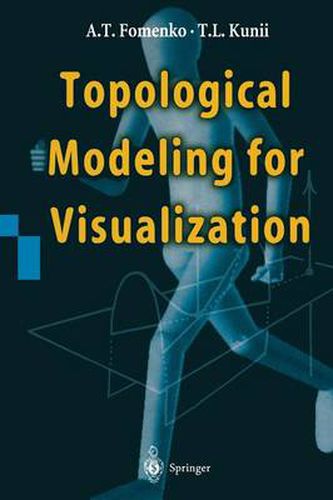Readings Newsletter
Become a Readings Member to make your shopping experience even easier.
Sign in or sign up for free!
You’re not far away from qualifying for FREE standard shipping within Australia
You’ve qualified for FREE standard shipping within Australia
The cart is loading…






This title is printed to order. This book may have been self-published. If so, we cannot guarantee the quality of the content. In the main most books will have gone through the editing process however some may not. We therefore suggest that you be aware of this before ordering this book. If in doubt check either the author or publisher’s details as we are unable to accept any returns unless they are faulty. Please contact us if you have any questions.
The flood of information through various computer networks such as the In ternet characterizes the world situation in which we live. Information worlds, often called virtual spaces and cyberspaces, have been formed on computer networks. The complexity of information worlds has been increasing almost exponentially through the exponential growth of computer networks. Such nonlinearity in growth and in scope characterizes information worlds. In other words, the characterization of nonlinearity is the key to understanding, utiliz ing and living with the flood of information. The characterization approach is by characteristic points such as peaks, pits, and passes, according to the Morse theory. Another approach is by singularity signs such as folds and cusps. Atoms and molecules are the other fundamental characterization ap proach. Topology and geometry, including differential topology, serve as the framework for the characterization. Topological Modeling for Visualization is a textbook for those interested in this characterization, to understand what it is and how to do it. Understanding is the key to utilizing information worlds and to living with the changes in the real world. Writing this textbook required careful preparation by the authors. There are complex mathematical concepts that require designing a writing style that facilitates understanding and appeals to the reader. To evolve a style, we set as a main goal of this book the establishment of a link between the theoretical aspects of modern geometry and topology, on the one hand, and experimental computer geometry, on the other.
$9.00 standard shipping within Australia
FREE standard shipping within Australia for orders over $100.00
Express & International shipping calculated at checkout
This title is printed to order. This book may have been self-published. If so, we cannot guarantee the quality of the content. In the main most books will have gone through the editing process however some may not. We therefore suggest that you be aware of this before ordering this book. If in doubt check either the author or publisher’s details as we are unable to accept any returns unless they are faulty. Please contact us if you have any questions.
The flood of information through various computer networks such as the In ternet characterizes the world situation in which we live. Information worlds, often called virtual spaces and cyberspaces, have been formed on computer networks. The complexity of information worlds has been increasing almost exponentially through the exponential growth of computer networks. Such nonlinearity in growth and in scope characterizes information worlds. In other words, the characterization of nonlinearity is the key to understanding, utiliz ing and living with the flood of information. The characterization approach is by characteristic points such as peaks, pits, and passes, according to the Morse theory. Another approach is by singularity signs such as folds and cusps. Atoms and molecules are the other fundamental characterization ap proach. Topology and geometry, including differential topology, serve as the framework for the characterization. Topological Modeling for Visualization is a textbook for those interested in this characterization, to understand what it is and how to do it. Understanding is the key to utilizing information worlds and to living with the changes in the real world. Writing this textbook required careful preparation by the authors. There are complex mathematical concepts that require designing a writing style that facilitates understanding and appeals to the reader. To evolve a style, we set as a main goal of this book the establishment of a link between the theoretical aspects of modern geometry and topology, on the one hand, and experimental computer geometry, on the other.